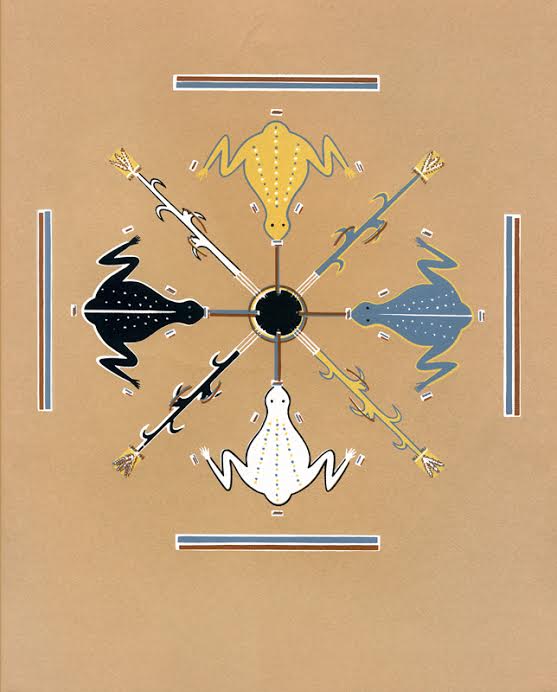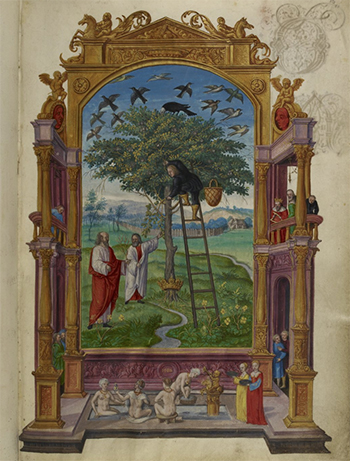ARAS Connections
Image and Archetype

Welcome
by Thomas Singer
This edition of ARAS Connections is a Joe Henderson fete and feast. We are presenting several different looks at Joe Henderson whose contributions to ARAS and to Analytical Psychology were seminal. First, this is the beginning of a series of articles that we will be offering in the coming issues that feature Joe Henderson’s lectures to the ARAS community in San Francisco between 1985 and 1998. Extensive notes on each lecture were taken by Dr. Daniel Benveniste who collected them in an unpublished monograph entitled Thinking in Metaphor. Dr. Benveniste has most graciously given us his permission to publish these lectures which we will collect into a digital edition of the entire Thinking in Metaphor. Kako Ueda, the Curator of ARAS, has undertaken the leadership role of collecting images that are referred to in each of the lectures and her work brings the material to life. In the second offering of this issue, we were able to obtain a video of a lecture that Joe gave on the same material and that is mentioned by Dr. Benveniste. In this context, it is also worth noting the fine book on the Splendor Solis that was coauthored by Diane Sherwood and Dr. Henderson: Transformation of the Psyche: The Symbolic Alchemy of the Splendor Solis. The third creation in this Joe Henderson sampler is a film/video that was made with Dr. Robin Jaqua and McKenzie Oaks Films. In this video, Dr. Henderson speaks of his life-long study of the archetype of initiation. Dr. Henderson’s Thresholds of Initiation remains a classic in the study of initiation and how it comes alive in the psyche of modern individuals. We will also be presenting a number of the Jaqua films on various themes in Analytical Psychology in subsequent issues of ARAS Connections
Finally, I would like to make note of two ongoing ARAS projects which are part of our efforts to bring ARAS into the world. They harken back to the spirit of the fine collection of essays, Man and His Symbols, that was first published in 1964. I remember being thrilled when I first encountered that volume because it brought the living symbols of archetypal reality into focus as they appear in contemporary social and political life and conflict. ARAS is carrying on the Man and His Symbols work in these two current projects:
1) ARAS has begun the second season of Gaia: Then and Now. Two episodes of the new season are now available online. Patricia Damery presents her personal story of farming on lands now threatened by development and, in her poetic narrative, the archetypal shines through the personal. Patricia centers her story on the oak tree and through the threat to the tree, we are taken into the realm of Gaia. Patricia’s new book is Fruits of Eden: Field Notes - Napa Valley 1991-2021. The second episode of Season 2 also centers on the tree in Stephan Harding’s spectacular consideration of The Tree of Life from three perspectives: alchemical, scientific, and kabbalistic. Stephen’s new book is Gaia Alchemy: The Reuniting of Science, Psyche, and Soul
2) In our other current ARAS in the world project, ARAS has teamed up with #WithUkrainianJungians. In a bold effort #WUJ is presenting a series of webinars over the next eighteen months that will feature well known Jungians from around the world speaking on topics related to the profound global reverberations from the Russian invasion of Ukraine. Ukrainian Jungians are also presenting in each of these webinars, offering a picture of the psyche and life today in war-torn Ukraine. In association with this webinar series, ARAS has initiated a gallery in which presenters and participants are contributing images that speak to the topics of the webinars and responses to the war in Ukraine. In addition, ARAS is hosting videos of all the webinars which are free to the public. Contributions to #WUJ to benefit Ukrainian Jungians are encouraged.
On the Splendor Solis: A Summary of Joseph L. Henderson’s presentation entitled “The Splendor Solis.”
by Daniel Benveniste in collaboration with Joseph L. Henderson, M.D.
 Dr. Henderson presented the first San Francisco Friends of ARAS lecture on December 7, 1985. His topic was a psychological commentary on a series of paintings from an alchemical text entitled “The Splendor Solis”. Subsequently, in 1987, Dr. Henderson presented his material for a smaller gathering and a video production team. The video of this lecture was presented to the Friends of ARAS on May 22, 1988. The following summary is based on my own notes as well as material from both presentations available in the Virginia Allan Detloff Library at the C.G. Jung Institute of San Francisco.
Dr. Henderson presented the first San Francisco Friends of ARAS lecture on December 7, 1985. His topic was a psychological commentary on a series of paintings from an alchemical text entitled “The Splendor Solis”. Subsequently, in 1987, Dr. Henderson presented his material for a smaller gathering and a video production team. The video of this lecture was presented to the Friends of ARAS on May 22, 1988. The following summary is based on my own notes as well as material from both presentations available in the Virginia Allan Detloff Library at the C.G. Jung Institute of San Francisco.
“The Splendor Solis: Alchemical Treatises of Solomon Trismosin - Adept and Teacher of Paracelsus” is an alchemical text, dated 1582, which now resides in the British Museum. It has 22 beautifully painted illustrations depicting the different stages of transformation in three different series. There is a frontispiece to the whole series followed by the first treatise with 10 images, the second treatise with 7 images and the third treatise with 4 images. Some of these pictures are included in Jung’s “Psychology and Alchemy,” some in Johannes Fabricius’ “Alchemy: The Medieval Alchemists and their Royal Art.” Most of the images are reproduced in color in Alexander Roob’s “Alchemy and Mysticism.” Fortunately, there is a reproduction of the book itself, but the pictures based on the originals are in black and white. Full color slides of the 22 images are available in the ARAS Collection. In addition, Dr. Henderson, with the assistance of Dyane Sherwood, has written a book-length discussion and interpretation of the Splendor Solis, complete with all the images printed in color. Note: This book was completed in 2003, titled “Transformation of the Psyche: The Symbolic Alchemy of the Splendor Solis.”
Dr. Henderson first learned of the “Splendor Solis” in 1937 while still in analysis with Jung. At this time, Jung was deeply interested in alchemy and saw in it a “metaphor of the work we do in Analytical Psychology” (JLH). Thus, the strange alchemical preoccupations of trying to change lead into gold, or the mixing and juggling of mythological material with more recent historical material, or the efforts to bring about chemical transformations, or the strange representations of sex, death, dismemberment, hermaphrodites, royalty, geometric shapes, and so on, suddenly take on new meaning when we recognize them as philosophical play in which the alchemists knowingly (or unknowingly) imbued their chemicals, their laboratories, their diagrams, and their treatises with personal and cultural meaning. This projection of psychology into substance enabled the alchemist to work (play) at the transformation of his depressed mind into an enlightened mind and in metaphor, to transform his lead into gold.
The following summary of Dr. Henderson’s presentation includes descriptions of the 22 paintings. These paintings, composed of vivid imagery framed by detailed borders, are too beautiful and too elaborate to be rendered in words so the descriptions will be brief.
Read On the Splendor Solis in its entirety here.
The Splendor Solis: Symbolic Alchemy Video
Here is a video, in two parts, of Dr. Henderson giving his talk on the Splendor Solis to a small group in San Francisco in 1987.
Part One:
Part Two: